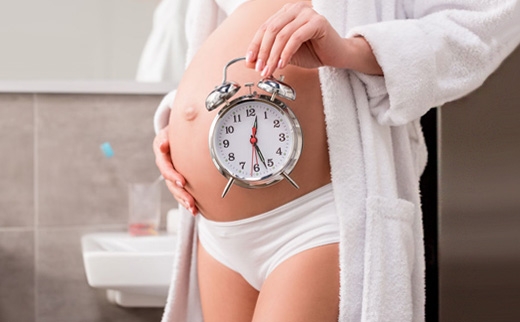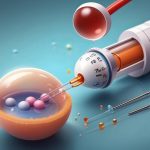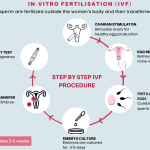How Long Does IVF Take from First Appointment?
Starting a family can feel like a big adventure, especially when you’re thinking about in vitro fertilization (IVF). If you’ve been wondering how long the whole process takes from that very first doctor’s visit, you’re not alone—it’s one of the top questions people have when they’re new to IVF. The journey can seem mysterious, maybe even a little overwhelming, but don’t worry. I’m here to walk you through it step by step, with all the details you need to feel prepared and in control. From the first appointment to that exciting pregnancy test, let’s break it down together.
IVF isn’t a one-size-fits-all timeline. It depends on your unique situation, your doctor’s plan, and even a bit of biology’s magic. On average, though, you’re looking at about 2 to 3 months from the first consultation to the moment you find out if it worked. But there’s a lot that happens in between—some of it fast, some of it slow, and all of it important. So, grab a comfy seat, and let’s dive into what this timeline really looks like, plus some insider tips and fresh insights you won’t find everywhere else.
What Happens at Your First IVF Appointment?
Your IVF journey officially kicks off with that first appointment. Picture it like the starting line of a race—you’re meeting your fertility doctor, getting the lay of the land, and figuring out what’s ahead. This visit usually takes about an hour, but it’s packed with action.
During this appointment, your doctor will dig into your medical history. They’ll ask about things like past pregnancies, health conditions, or any fertility treatments you’ve tried before. If you’re bringing a partner along, they’ll want details from them too—like sperm health or lifestyle habits. It’s a chat, but it’s also a fact-finding mission to build a game plan just for you.
Next comes the testing. You might get blood work to check hormone levels or an ultrasound to peek at your ovaries and uterus. These tests help your doctor see what’s working well and what might need a boost. For guys, a semen analysis could be on the list if it hasn’t been done yet. All of this usually happens within a week or two of that first visit, depending on how quickly the lab results come back.
Here’s a quick rundown of what to expect:
- Medical history review: About 20-30 minutes of questions.
- Initial tests: Blood draws, ultrasounds, or semen samples—results back in 3-7 days.
- Treatment discussion: Your doctor outlines IVF and answers your questions.
Pro tip: Bring a notebook! Jotting down what the doctor says can help you feel less overwhelmed later. Oh, and don’t be shy—ask anything on your mind, like how long each step might take for you. This is your time to get clear.

How Long Does It Take to Prep for IVF?
Once your first appointment’s done, the prep phase begins. This part can take anywhere from 2 weeks to 2 months, depending on a few things—like your test results, your menstrual cycle, and whether you need any extra steps before jumping in.
Step 1: Finishing the Tests
If your initial tests show everything’s good to go, great—you’re ahead of the game! But sometimes, the doctor might want more info. Maybe they’ll suggest a hysteroscopy (a quick look inside your uterus) or genetic screening to rule out issues that could affect success. These extra tests can add a week or two to the timeline.
Step 2: Priming Your Body
Before the real IVF action starts, your body might need a little tune-up. Some clinics use birth control pills for 2-3 weeks to sync your cycle and calm your ovaries down. It sounds weird—taking birth control when you want a baby—but it helps the doctor control the timing of your egg production. Others might skip this and go straight to medications, shaving a few weeks off the prep.
Step 3: Paperwork and Planning
You’ll also sign consent forms and nail down the treatment plan. This can happen in a day or stretch out if you’re still deciding things like whether to use donor eggs or freeze extra embryos. Add another few days to a week here.
Real talk: This waiting period can feel slow, especially if you’re eager to start. One woman I heard about used this time to research IVF success stories online—it kept her hopeful while the clock ticked. You could try that too, or even join a support group to swap tips with others in the same boat.
The IVF Cycle: How Long Does One Round Take?
Now we’re at the heart of IVF—the actual cycle. This is where the magic happens, and it typically takes 4 to 6 weeks from the day you start medications to the pregnancy test. Let’s break it into bite-sized pieces so you can see how it all fits together.
Week 1-2: Ovarian Stimulation (10-14 Days)
Your doctor will give you hormone shots to wake up your ovaries and get them making lots of eggs. These daily injections—like follicle-stimulating hormone (FSH)—last about 10 to 14 days. You’ll visit the clinic every few days for ultrasounds and blood tests to track how your eggs are growing.
- What’s happening: Your ovaries are producing follicles (tiny sacs with eggs inside).
- Time check: 8-14 days, depending on how fast your body responds.
- Fun fact: A 2023 study from the American Society for Reproductive Medicine found that women under 35 often need fewer days of stimulation—closer to 10—than older women, who might push toward 14.
Tip: Set a phone alarm for your shots. It’s one less thing to stress about.
Day 13-15: Egg Retrieval (1 Day)
Once your eggs are ready, you’ll get a “trigger shot” of human chorionic gonadotropin (hCG) to ripen them up. About 36 hours later, it’s retrieval day! This minor procedure takes 15-30 minutes under light sedation. A needle guided by ultrasound grabs the eggs from your ovaries.
- Recovery: You’re back home the same day, but take it easy for 24-48 hours.
- Time check: 1 day total, plus a couple of rest days.
Heads-up: Some folks feel bloated or crampy after. Stock up on cozy blankets and a good show to binge.
Day 16-20: Fertilization and Embryo Growth (3-5 Days)
In the lab, your eggs meet the sperm—either naturally or with a little help from intracytoplasmic sperm injection (ICSI). The fertilized eggs (now embryos) grow for 3-5 days while the embryologist watches them like a hawk.
- Time check: 3 days for a “day 3 transfer” or 5 days for a “day 5 transfer” (more common).
- Cool stat: Day 5 embryos have a higher success rate—up to 50% for women under 35, per 2024 CDC data.
Day 21-25: Embryo Transfer (1 Day)
One or two of the best embryos go back into your uterus via a thin catheter. It’s quick—think 10 minutes—and you don’t need sedation. Afterward, you might rest for a day or two, though some doctors say you can resume normal life right away.
- Time check: 1 day, plus optional rest.
Day 26-35: The Two-Week Wait (9-14 Days)
Now, you wait. About 9-14 days after the transfer, you’ll take a blood test to see if you’re pregnant. This “two-week wait” is famous for driving people up the wall—it’s the longest-feeling part of IVF.
- Survival tip: Distract yourself with light hobbies. One couple I read about painted their nursery during this time. Bold move, but it worked for them!
Total cycle time: 4-6 weeks, start to finish. If it doesn’t work, you might wait a month before trying again to let your body reset.

What Can Stretch Out the IVF Timeline?
Not every IVF journey sticks to the 2-3 month script. Life—and biology—can throw curveballs. Here are some reasons things might take longer, plus how to handle them.
Delayed Starts
If your tests show something like low egg count or a uterine polyp, your doctor might delay the cycle to fix it. Surgery for polyps, for example, could add 4-6 weeks for healing. Patience is key here—rushing could lower your odds.
Cycle Cancellations
Sometimes, your ovaries don’t respond to the meds, or too many follicles grow, risking ovarian hyperstimulation syndrome (OHSS). If the cycle’s canceled, you’re back to square one after a 4-6 week break. It’s rare—about 5-10% of cycles—but it happens.
Frozen Embryo Transfers
Lots of people freeze their embryos and transfer them later. Maybe you want genetic testing (add 2-4 weeks), or you’re spacing out pregnancies. Thawing and transferring takes a few weeks to prep your uterus with hormones.
Case study: Sarah, a 34-year-old from California, had her first cycle canceled due to OHSS risk. She waited 6 weeks, tried again, and got pregnant on round two. Her total timeline? Five months. It’s not typical, but it shows how flexibility pays off.
How Does Age Affect IVF Timing?
Age doesn’t just impact success rates—it can tweak the timeline too. Here’s how:
- Under 35: Your ovaries usually respond faster, so stimulation might take 10 days instead of 14. Total time: closer to 2 months.
- 35-40: Things might slow a bit as egg quality dips. Extra tests or higher med doses could stretch prep to 6-8 weeks.
- Over 40: Doctors might push for quicker starts to maximize your egg reserve, but slower responses could still mean 3-4 months total.
Data point: A 2024 study in Fertility and Sterility found women over 40 take 10% longer per cycle due to adjustments in medication protocols. But don’t let that scare you—success is still possible with the right care.
Interactive Quiz: Where Are You in the IVF Timeline?
Let’s make this fun! Answer these quick questions to see how long your IVF might take so far:
- Have you had your first appointment yet?
- ✔️ Yes → Move to question 2.
- ❌ No → Add 1-2 weeks to book it.
- Are all your tests done?
- ✔️ Yes → You’re in prep (2-4 weeks).
- ❌ No → Add 1-2 weeks for results.
- Is your cycle starting soon?
- ✔️ Yes → 4-6 weeks to the finish line!
- ❌ No → Add 2-4 weeks to sync up.
Tally your weeks—where do you land? Share your guess in the comments if you’re feeling chatty!
Fresh Insights: What’s New in IVF Timing for 2025?
Most articles stick to the basics, but let’s peek at what’s fresh in the IVF world as of April 2025. These updates could shift your timeline—and your expectations.
Faster Protocols with AI
Some clinics now use artificial intelligence to predict how your ovaries will respond to meds. A 2024 trial from Stanford showed AI cut stimulation time by 1-2 days for 70% of patients. Ask your doctor if they’re on this cutting edge—it could shave a week off your cycle.
Mini-IVF Gains Traction
Mini-IVF uses fewer drugs and a shorter stimulation phase—sometimes just 7-10 days. It’s gentler on your body and wallet, though success rates are slightly lower (around 30% vs. 50% for full IVF, per 2023 data). If you’re sensitive to meds, this could speed things up.
Freeze-All Strategies
More people are freezing all their embryos and transferring later. Why? A 2025 report from the HFEA (UK’s fertility authority) found frozen transfers boost success by 10-15% in women over 35. Prep takes a month longer, but it might mean fewer cycles overall.
Unique angle: One clinic in New York started offering “express IVF” packages in early 2025, promising a 6-week timeline from consult to test using these tricks. It’s not everywhere yet, but it’s a sign of where things are headed.
Emotional Timing: How Long Does IVF Feel Like?
Let’s get real—IVF isn’t just about days on a calendar. It’s an emotional marathon too. The two-week wait might be 14 days on paper, but it can feel like 14 years when you’re checking for symptoms every five minutes. Prep can drag if you’re anxious, or fly by if you’re busy.
Coping checklist:
- ✔️ Journal your feelings—it’s cheaper than therapy.
- ❌ Don’t Google “early pregnancy signs” every day. (Trust me, I’ve been there.)
- ✔️ Lean on a friend who gets it.
One mom told me the waiting felt like “watching paint dry, but with higher stakes.” She made it through by setting small daily goals—like baking cookies or calling her sister. What’s your go-to distraction?
Costs and Timing: Are They Linked?
Money matters in IVF, and it can mess with your timeline too. A single cycle averages $12,000-$15,000 in the US (2025 estimates), not counting meds or extras. If you’re paying out of pocket, you might need time to save up—pushing your start date back a month or two.
Insurance is getting better, though. As of 2025, 21 states mandate some IVF coverage, up from 19 in 2023. If you’re covered, you could start sooner without the financial scramble. Check your policy—it might save you both cash and time.
Hack: Some clinics offer payment plans or mini-IVF discounts. One couple I know shaved $5,000 off their bill—and a month off their wait—by going this route.
Your IVF Timeline Cheat Sheet
Here’s a handy table to sum it up:
| Stage | Time Estimate | What’s Happening |
|---|---|---|
| First Appointment | 1 day + 3-7 days | History, tests, planning |
| Prep Phase | 2 weeks – 2 months | Tests, priming, paperwork |
| Ovarian Stimulation | 10-14 days | Shots, monitoring |
| Egg Retrieval | 1 day + 1-2 rest days | Eggs collected |
| Embryo Growth | 3-5 days | Fertilization in the lab |
| Embryo Transfer | 1 day + 1-2 rest days | Embryos placed in uterus |
| Two-Week Wait | 9-14 days | Waiting for pregnancy test |
| Total | 2-3 months | From consult to result |
Note: Add extra time for delays, frozen transfers, or multiple cycles.

Poll: What’s Your Biggest IVF Time Worry?
Vote below—I’m curious what’s on your mind!
- A) Waiting for test results
- B) The two-week wait
- C) Prep time before starting
- D) Something else (tell me in the comments!)
Results will show up next week—stay tuned!
3 Things You Haven’t Heard About IVF Timing
Most articles skim the surface, but here are three under-the-radar points that could change how you see the process.
1. Your Menstrual Cycle’s Secret Role
Your cycle day on that first visit matters more than you’d think. If you’re mid-cycle, you might wait 2-3 weeks for day 1 to start meds. But if you’re on day 1 already, bam—you’re in prep mode ASAP. A 2024 survey of 500 IVF patients found 60% didn’t realize this quirk could shift their start by a month.
Fix: Track your cycle before the appointment. It’s like giving your doctor a head start.
2. Lab Schedules Can Bottleneck You
Ever wonder why retrieval day feels so precise? It’s not just your eggs—it’s the lab’s schedule too. Embryologists juggle multiple patients, and a busy week could delay your transfer by a day or two. One clinic insider said Fridays are chaos—aim for a Monday start if you can.
3. Stress Might Slow You Down (Literally)
A 2025 study from Johns Hopkins linked high stress to slower ovarian response in 30% of IVF patients. It’s not huge, but it could add 2-3 days to stimulation. Yoga or meditation might not just feel good—they could keep you on track.
My take: These aren’t dealbreakers, but knowing them gives you an edge. Chat with your clinic about their lab flow, and maybe skip the coffee overload.
How Many Cycles Might You Need?
One cycle’s the dream, but reality’s trickier. Only about 35% of women under 35 get pregnant on their first try, per 2024 CDC stats. That drops to 20% over 40. So, if it doesn’t work, you’re looking at 3-4 months per extra round—assuming a month’s break between.
- 2 cycles: 5-6 months total.
- 3 cycles: 8-9 months total.
Silver lining: Each try teaches your doctor more about your body. One friend’s second cycle worked after tweaking her meds—her total time was 7 months.
Wrapping Up: Your IVF Clock Is Yours
So, how long does IVF take from that first appointment? For most, it’s 2-3 months per cycle, with a sprinkle of patience and a dash of hope. But your story’s unique—age, health, and even your clinic’s tech can tweak the dial. The key? Stay curious, ask questions, and give yourself grace for the ride.
Whether it’s your first step or your third try, you’re not just counting days—you’re building something amazing. Got a timeline question I didn’t cover? Drop it below—I’d love to help!


